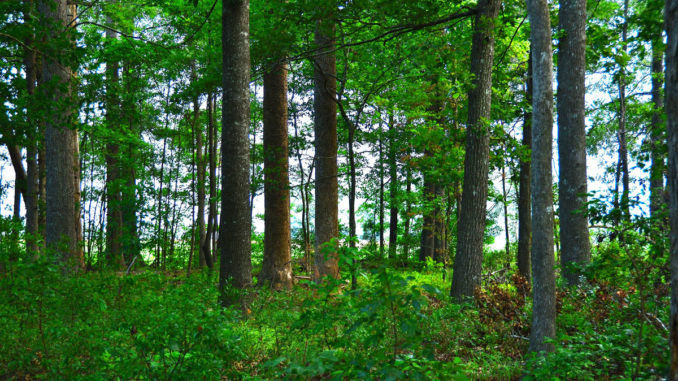
From lumber and veneer to fiber, the Carolinas are home to a thriving forest-products industry, and timber harvests are common throughout the region. Hunters who happen to own their hunting land are in the driver’s seat for making timber-harvesting decisions that can benefit both their wildlife and their bank accounts.
Harvesting timber can bring big bucks to the landowner and at the right time. Timber proceeds can offer significant financial resources to conduct on-site management activities, such as food plots, road maintenance and reforestation. Even though every tree counts in the final payment, it takes a lot of trees to make a load of lumber or pulpwood. In the end, landowners can leave a few trees in select areas or narrow strips along prescribed areas and only marginally affect their paychecks.
Timber harvests can look messy, but the after-effects can be astonishing, establishing major food sources for deer and other wildlife. But the time lapse between the harvest and food regeneration can be excessive on sites with low soil-fertility or those that are excessively dry.
Landowners should consider protecting nut-bearing trees along the margins of the cutover areas to provide a fall food source for wildlife. While it can be tempting to leave these trees scattered across the site, leaving scattered trees is not always the best prescription. These remaining trees will be susceptible to wind damage and can interfere later with forest regeneration practices. Leaving nut-bearing trees near the margins or even along the cutover areas can provide an excellent place for deer to forage the next fall. Not only will that create edge habitat, there will be fresh nuts along the ground right in the edge habitat.
Landowners can go to another level, too, with larger, uncut regions. They can incorporate buffer strips along streams, field edges and forest edges into their harvest plan that can be used as travel corridors for wildlife. Travel corridors can provide a place for wildlife to travel safely while providing hunters with an ideal funnel for an early season bow stand.
Timber harvest is a normal part of life for a southern landowner, but it doesn’t always have to be all about the trees. Landowners can manage their forests to bring the highest financial returns and provide ample wildlife habitat in the same process.




Be the first to comment